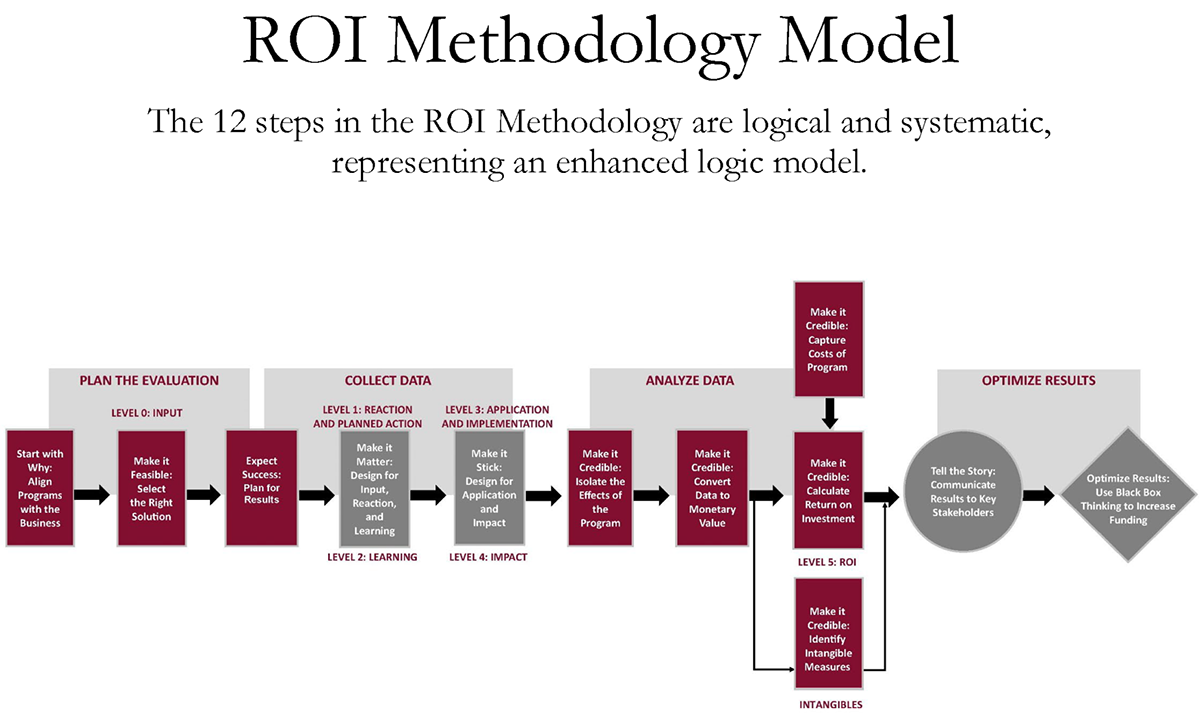Working for Event ROI Success — The Essentials
So far, we’ve introduced the ROI methodology and why it works for event management. We’ve also looked at the V-model and the six levels of data - giving you a snapshot of the planning system. Today, we’re moving into the 12 steps of ROI, the bones of the operation.
We want to give you every opportunity to thrive in your event ROI with these techniques for planning meetings and events! Here’s a breakdown of the first 5 of the 12 steps of the Methodology.
Planning for the return of events
Start with the Why.
As with everything, planning will make or break your event and how fully you can optimize the post-event data. Previously in event planning, leadership told you to discuss evaluations at the end of the event, which limited what and how planners evaluated their work.1When you evaluate a variety of objectives at the beginning — with the right leaders — your clients will have a creative edge in planning for business impact!
Make it feasible. Select the right solution.
In the early stages of ROI, you must develop and review the business objectives for the event. ROI Methodology in 12 Easy Steps says, “Three questions must be addressed: What needs to change to influence the impact measure? What can enable this change, and what is the best solution?”2 With a variety of people in the chain of command, it is essential to have key stakeholders and executives as part of the conversation to plan specific business solutions. The opportunities for payoff may or may not be evident at first, but once you dig into the reasons for having the event, the details will soon follow.Expect Success. Plan for Results.
Say you’re a sales company hosting a new product launch; you’d want the CEO, the sales team, and marketers to agree on what training events are needed on the product. They would determine what information the attendees should leave with and how to follow up with both the sales team and attendees post-event to gauge effectiveness (surveys, tests, interviews, focus groups, business performance monitoring). Taking a bird’s eye view with planning allows you to widen your scope and increase your return on the event.
Collecting the data from your event
Planners don’t use all levels of data collection in these steps for every event; the more costly the program, the closer to accurate ROI analysis we go. As you use these steps to analyze each facet of your event, you are essentially planning for great results at every turn.
Make it Matter. Design for input, reaction, and learning (Level 1-2).
Once the reactions (desired actions) are laid out, and the planning begins, we start to bring in data. From tracking people and requests to technology and cost (level 0), there are a host of to-dos and people involved in these stages. Most likely, besides the cost, the executives will not care about this data - but they will care about what comes after these fundamentals. Reactions (level 1) will show whether the attendees thought the event was worth their time on varying points of interest. Learning (level 2) will ask the attendees about the information they walk away with, helping them recall the most important points.Make it stick. Design for Application and Impact (Levels 3-4).
Jack Philips says, “Application levels are similar to learning objectives but reflect actual use in the participant’s work or life situation.”3 Ask yourself, and your company heads what changes they wish to see in their employees or what actions the attendees should take. Once this is established, you work to bring the best event to accomplish the company’s goals. Impact describes the business measurables that an event should produce. Within six months, you should know what percentages of the event goals happened. When you approach the leadership with positive results from the event, your time and effort will go from simply “putting on an event” to “bringing business impact.”
This ROI Methodology® is what we do with our clients. We can bring them through this journey to thoroughly plan and process event ROI and create events that improve people and inspire them to exceed goals!
If you’re looking for a step-by-step course that takes you into the recesses of event ROI, you can visit the people at the ROI Institute.
Philips, Jack J. et al. Return on Investment in Meeting and Events. Butterworth-Heinemann, 2008, p. 32
Philips, Jack J. “The Roi Methodology in 12 Easy Steps.” ROI Institute, 2019, p.8
Philips, Jack J. et al. Return on Investment in Meeting and Events. Butterworth-Heinemann, 2008, p. 65

